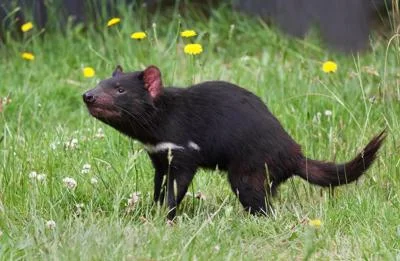
The Fight For Survival: Tasmanian Devils and Their Battle Against Extinction
In a remarkable twist of nature, the Tasmanian devil—a unique and iconic marsupial—faces an existential threat that jeopardizes its very existence. The plight of these creatures is not merely a conservation issue; it underscores the complexities of wildlife disease interactions and the urgent need for effective conservation measures. This article sheds light on the alarming decline of the Tasmanian devil population, driven largely by a transmissible form of cancer, known as Devil Facial Tumor Disease (DFTD).
Found exclusively on the island of Tasmania, these fascinating creatures have gained a notorious reputation for their fierce feeding behavior and haunting vocalizations. However, behind this rugged exterior lies a species in peril. The transmissible cancer that afflicts them allows cancerous cells to transfer from an infected individual to a healthy one, resulting in death within a mere few months after contact. With mortality rates soaring, the Tasmanian devil has seen its population plummet by nearly 60% over a decade, raising alarm bells among conservationists and wildlife enthusiasts alike.
Historically, the Tasmanian devil was classified as a stable species as late as the 1990s. Yet, by 2008, the IUCN recognized the devastating impact of DFTD, prompting a critical reassessment of their status. Once boasting an estimated population of 130,000 to 150,000 individuals, fewer than 25,000 Tasmanian devils remained by 2007. Their once-thriving presence has been reduced to whispers in remote corners of the island.
The quest to understand DFTD has spurred significant research efforts aimed at uncovering the disease’s mechanisms. Experts are hopeful that insights garnered from studying this cancer may inform conservation strategies not only for Tasmanian devils but also for other wildlife facing similar biological adversaries. Informed by their findings, conservationists aim to implement captive breeding programs that bolster genetic diversity and enhance the resilience of this endangered marsupial.
Rebecca Bracken, the conservation research director at the Gulf Coast Bird Observatory, remarks, “While we exercise guarded optimism for the Tasmanian devil's future, the research being conducted is invaluable for the broader ecological sphere. Understanding how disease interacts with wildlife can yield therapeutic advances for various species, including humans.”
As we stand at this crucial juncture for the Tasmanian devil, the question remains: Can we turn the tide against DFTD and ensure the survival of this remarkable species? The urgency of this issue calls for increased public awareness and engagement, as every small effort can contribute to preserving these vital creatures of our planet.
We invite our readers to reflect on this pressing matter. What more can be done to support conservation efforts for species like the Tasmanian devil? Leave your comments below and join the conversation!